DMS Technology 101
Welcome to DMS Technology 101! This is a learning area where you can expand your knowledge of the technology that drives Dynamic Message Signs (DMS) and the Intelligent Transportation Systems (ITS) industry.
Light Emitting Diodes (LEDs)
Daktronics recommends LED displays employed in ITS applications use high-quality, latest-generation AlInGaP (aluminum, indium, gallium, phosphide) technology to maximize visibility. AlInGaP LEDs ensure the display consumes less power yet produces light brighter than obsolete fiber optic, incandescent bulb, and reflective disk displays.
For maximum LED lifetime brightness, Daktronics recommends the LED manufacturer's specifications always be followed when determining display drive current, which in most cases is 30 milliamps.

Pixels
Daktronics DMS provide full pixel monitoring. Operators will always know if pixels have failed, and they can adjust text accordingly or instantly send maintenance crews.
![]()
Modules
DMS modules are easy to install and remove thanks to convenient DMS features such as walk-in cabinets, front- and rear-access doors and front-access louvers. Daktronics designs its DMS modules with reliability and durability in mind.
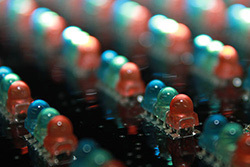
Resolution
Resolution means the number of pixels in the physical area of the DMS. The greater the number of pixels per square foot, the greater the amount of detail displayed.
Factoring in viewing distance, DMS used in roadway applications typically do not require resolutions of less than 20 mm. The three examples below show MUTCD-approved graphics as if they were displayed on a five-foot-high DMS.
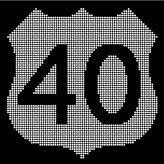
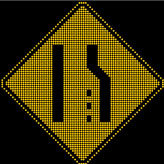
20 mm
236 pixels per sq foot
(929.03 cm2)
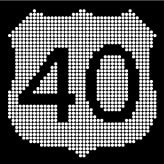
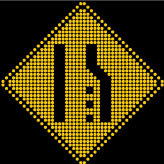
34 mm
85 pixels per sq foot
(929.03 cm2)


66 mm
21 pixels per sq foot
(929.03 cm2)
Resolution Technology Comparison
High-Resolution Full-color
With unmatched clarity and sharpness, the masked-face 20mm Vanguard DMS closes the gap between dynamic and printed signage. This versatile technology allows agencies to produce practically any text, sign or symbol in the MUTCD catalog. This product was designed especially for:
- Sharp, legible text and graphics – even at short viewing distances
- Intelligent control for active traffic management
- Efficient, low-cost maintenance and service
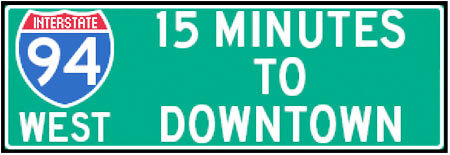
Medium-Resolution Amber
Medium-resolution DMS further improve message legibility. These offer many more pixels in the same display area as the 66mm.
- Create extremely legible MUTCD-compliant graphic symbols and much sharper characters
- The added detail provided by high-resolution DMS significantly improves legibility
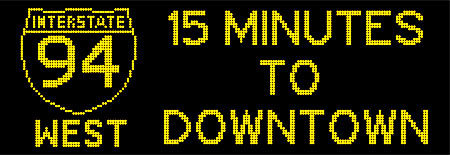
Medium-Resolution Full-Color
Daktronics incorporates world-leading experience in full-color and medium-resolution LED technology to deliver products specifically designed to meet ITS standards. Common uses include:
- Highly recognizable MUTCD-compliant graphic symbols
- Warnings in low visibility weather like smoke and fog
- Toll plaza lane icons
- AMBER Alerts
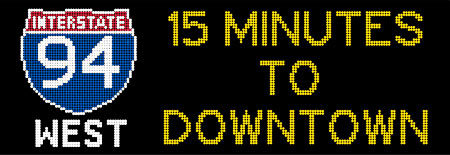
Full Matrix Amber
Today's typical DMS configuration. Full-matrix displays help to ensure motorists receive your message by allowing multiple font sizes and graphics.
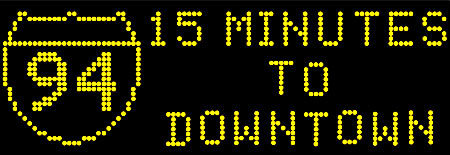
Full Matrix Full-Color
Color graphics, text and MUTCD symbols quickly inform drivers of changes in traffic, road conditions or payment options.

Graphics
Graphics greatly improve DMS message legibility. A recent University of Rhode Island study found that motorists react 35% faster on average when the text message includes a standard MUTCD graphic symbol. The human brain decodes symbols or icons much more quickly than text. Other benefits of graphics:
- 94% of study subjects preferred graphical DMS to text-only DMS.
- Improves recognition among non-native English speakers.
- Strongly decreases the time older drivers need to comprehend messages.
Examples
The following graphics illustrate the possible types of icons that could be used to convey transportation information. Due to enhanced legibility, full-color DMS have the potential to make your roads safer and your motorists happier.
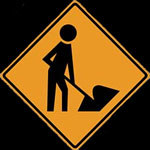
Roadwork
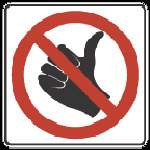
No hitch hiking
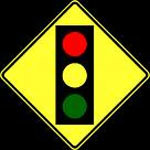
Stop light

Road construction
Full-Color
Like full-matrix graphics, color improves reaction time even further. Adding color to graphics makes situations such as AMBER Alerts™ much more effective because pictures can be displayed. Standard Manual on Uniform Traffic Control Devices (MUTCD) traffic symbols can also be perfectly reproduced.
Daktronics DMS generate more than 32,000 colors and last just as long as monochrome LEDs—about 100,000 hours (11 years) at continuous full intensity.
The rendering is an example of how full color can be used convey an interstate system and the drive time; this is just a small sample of what full color Daktronics DMS can do for your drivers.

Character Heights
Standard Character Heights
ITS displays use a standard 18-inch character height, although that can deviate depending on the display's resolution. Some Daktronics DMS are available in character sizes such as 12 inch, 9 inch, or 6 inch. Any character, however, can be doubled (or more) in size.
For example, 9-inch characters can be doubled in height to produce 18-inch characters; that character would contain more pixels and thus be clearer than a standard 18-inch character.
18"/66 mm
18"/46 mm
18"/34 mm
18"/20 mm
It's possible to read most Daktronics LED displays with 18-inch characters at more than 1,000 feet away.
Fonts
Standard Fonts
DMS messages are almost always displayed in capital letters. DMS fonts define what pixels will be turned on to form each character. In many cases, multiple fonts are used to either add emphasis to information or to fit more information onto a sign.
For example, a bold or larger font could be used to highlight key words in a message. Or a smaller font (Down to 10.6 inches, according to the MUTCD) may be used to fit more information onto a DMS.
Font Types
The following examples are just a few of the font types that can be used on dynamic message signs.
NEMA A Series font
MUTCD D Series font
MUTCD E Series font
Viewing Angles
Not all installation sites are the same. Factors like curving roadways, shoulder-mounted sign locations, and side visibility are some of the common site-related issues affecting sign legibility.
This is why Daktronics offers dynamic message signs in two viewing angle options—focused (15 degrees), wide (30 degrees), and extra-wide (70 degrees)—to ensure optimum viewing area. Contact Daktronics, and we'll help you determine what viewing angle could be best for your application.
How do I measure a viewing angle?
Viewing angles are defined as where the intensity of the LEDs are at 50% of their maximum brightness when a traveler is viewing the DMS from a straight position. For example, at 15 degrees off-center, the LED brightness in a standard 30 degree viewing cone would be 50% of the maximum intensity.
Viewing Cones
The graphics below shows examples of DMS viewing angles; note these graphics are not to scale.
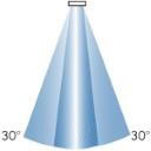
30 Degree
Standard viewing angle for roadside placement and slightly curved lengths of roadways.

70 Degree
Wide viewing angle for wide highways and curved lengths of highway.
*Only available in the VL350 mode
Applying a viewing cone to a project
DMS signs have varying viewing angles to offer the best balance between form and function; these angles can meet the needs of many drivers in diverse driving situations. The graphic shows all three angles as they could be applied to a highway system. This graphic is not to scale, but it can be used for estimate the viewing angle that your highway or roadway needs.

Viewing Distance
The maximum distance travelers can identify a message on a DMS is called legibility distance. There are no indications in the MUTCD of how bright the LEDs on a DMS should be, but Daktronics strongly recommends a display brightness of at least 9,200 cd/m². All DMS should have intensity adjustment to optimize legibility in all ambient light levels.
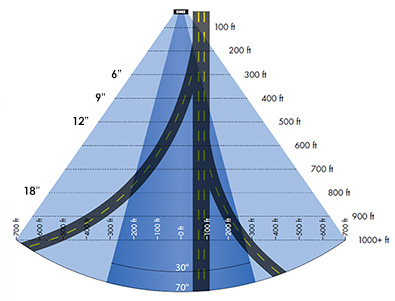
Recommended maximum viewing distances when using nominal 7x5 font.
Viewing Ranges & Speeds
Character Height: 6"
6 inch character = 20 mm pixel spacing
Maximum Viewing Range: 300'
91.44 m
Maximum Viewing Speed: 15 / 25 mph
24.14 / 40.23 km/h
Character Height: 9"
9 inch character = 34 mm and 20 mm pixel spacing
Maximum Viewing Range: 450'
137.16 m
Maximum Viewing Speed: 15 / 35 mph
24.14 / 56.32 km/h
Character Height: 12"
12 inch character = 46 mm, 34 mm, and 20 mm pixel spacing
Maximum Viewing Range: 600'
182.88 m
Maximum Viewing Speed: 15 / 45 mph
24.14 / 72.42 km/h
Character Height: 18"
18 inch character = 66 mm, 46 mm, 34 mm, and 20 mm pixel spacing
Maximum Viewing Range: 1100'
335.28 m
Maximum Viewing Speed: 15 / 75 mph
24.14 / 120.70 km/h
Communication
Daktronics Vanguard® DMS use a number of communications methods to control DMS network's content and internal systems, including the Vanguard® Central Control Software.
Contact Daktronics to find out more about what communication method could work best for your project including dial-up, cellular, fiber, Ethernet, direct, or radio.

NTCIP
NTCIP stands for National Transportation Communications for ITS Protocol. It allows interoperability among various manufacturers of ITS products such as DMS, cameras, signals, and communication methods such as fiber, radio, Ethernet, etc.
DMS commonly use NTCIP as their method of communicating with the software and communication devices that run them, because the protocol sets the ITS industry standard. Daktronics does not use any proprietary communications protocols and conforms exclusively to NTCIP.
Daktronics recommends purchasing fully NTCIP compliant DMS for reasons such as future-proofing, easy integration into existing signage networks, and software compliance. Daktronics Vanguard® DMS support all the mandatory groups and many optional conformance groups, including extensions to support full color displays, power supply status, and advanced pixel diagnostics.







